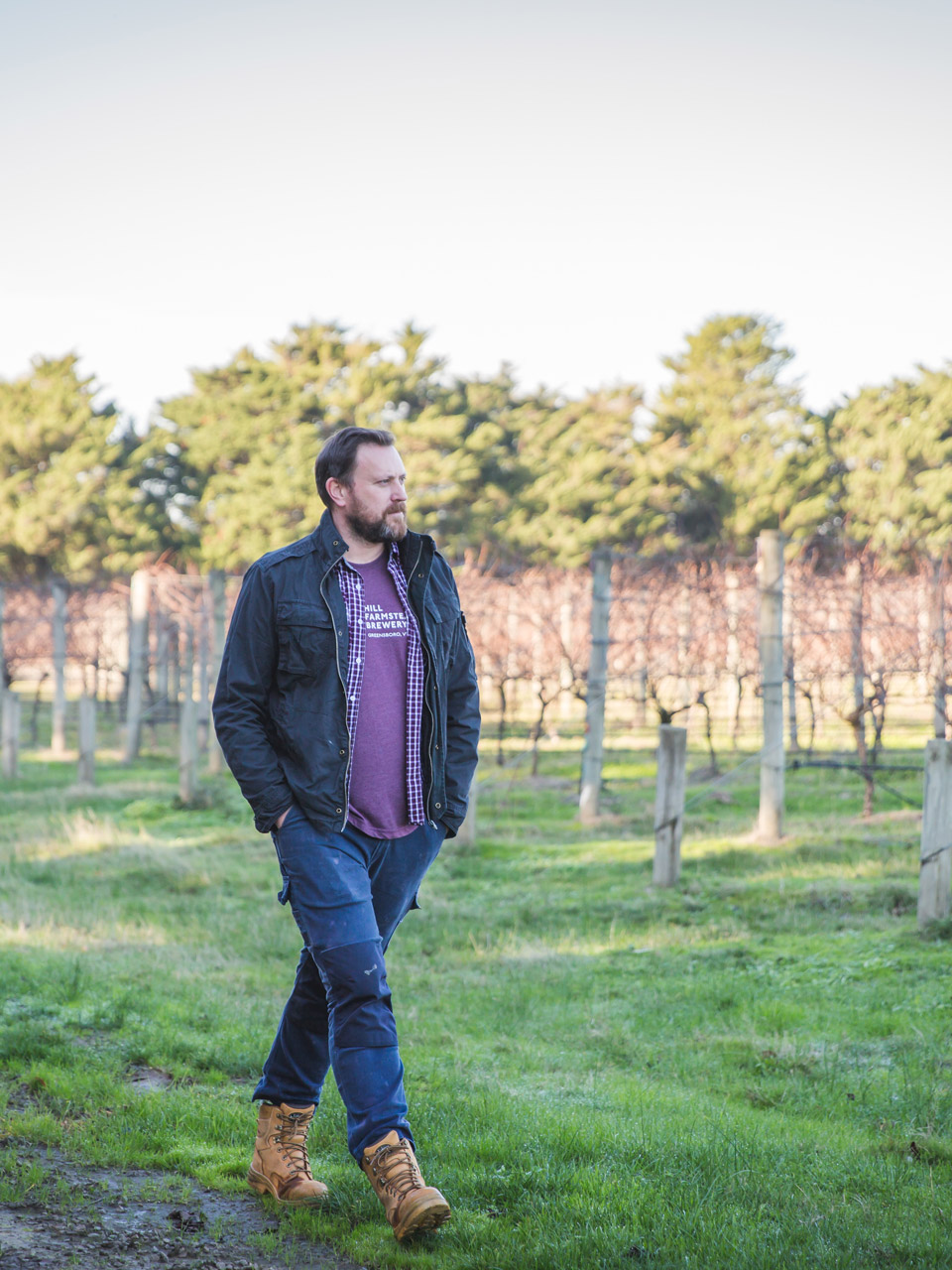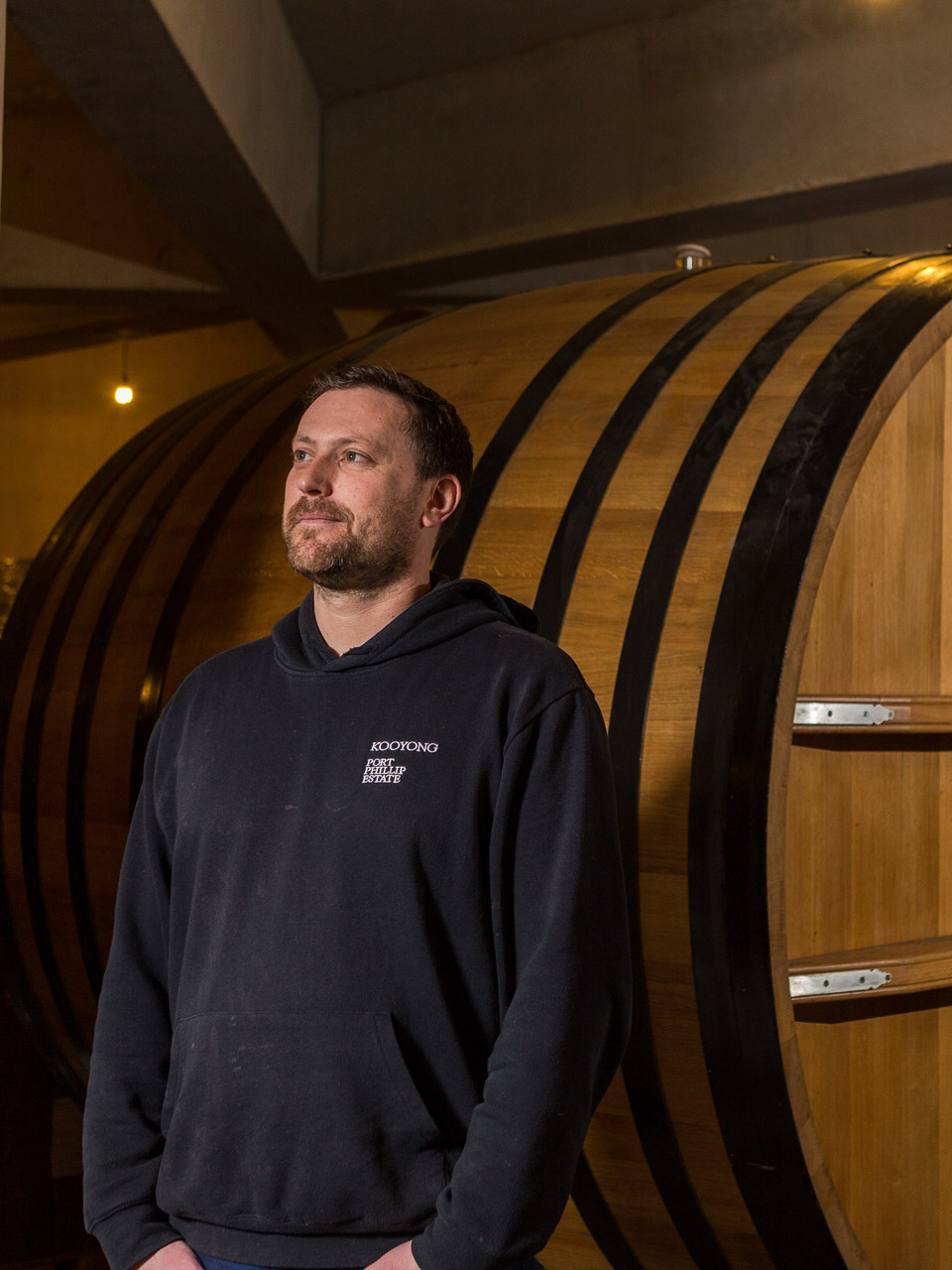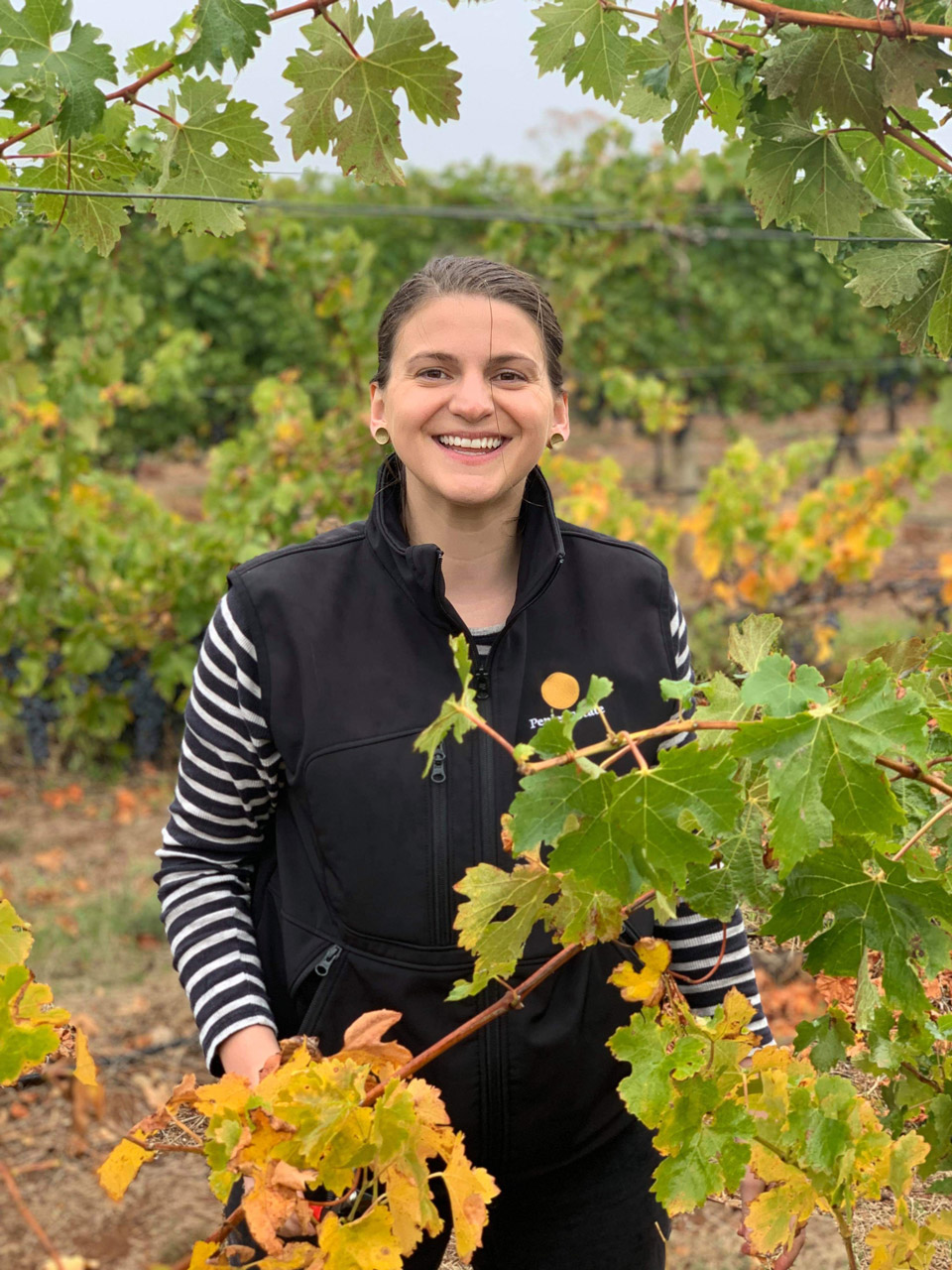Reimagining the Classic Whites
The 2021 Top 50 features Made by Monks, Quiet Mutiny and Express Winemakers, who are all expressing semillon, riesling and sauvignon blanc in new and exciting ways. Tasting notes appear at the end of the article.
There is no one path for a winemaking career, with some of our most celebrated winemakers – like some of our most vaunted cooks – never completing any formal qualification, rather learning by trial and error. Some have only ever worked at the family winery, some have travelled broadly, both here and overseas, gaining experience along the way. Some target working at small wineries that share a similar ethos, while some believe that getting experience at the big guys is the way, and many think a mix of experience is key. Some have never worked anywhere at all, launching their own brand with their very first wines.
There is no right way, and with an increasingly dynamic wine scene, winemakers earning their stripes within established wineries are increasingly given the freedom to express their ideas and reshape the possibilities for the brands, rather than following tried-and-true recipes.
“I always believed that in order to have creative freedom, and to feel a level of ownership of my wines, I would need to start my own label,” says winemaker Lauren Hansen. “Working with Penley Estate for the last three years has changed that perception somewhat.”
Hansen works alongside Chief Winemaker Kate Goodman, overseeing and managing the production, but hers is not a role that simply adds an extra pair of hands and eyes to achieve Goodman’s vision, or that of the owners. Rather, it is a deeply collaborative relationship that has put the idea of her own label on the backburner. “Project Lauren is definitely a part of my future,” she says, “but working with Kate, viticulturist Hans Loder and the Penley team is my priority for now, and very much satisfies my need for creativity.”
“We have an established market, so if we were to throw a complete 180-degree turn overnight, there would be repercussions.”
That’s a picture that would surprise many, with the idea of working for a larger concern (Penley has 80 hectares under vine) typically seen as a way to learn about processes and management – of both a big roster of wines and a team of people – but not so much to indulge creative flights of fancy.
“I can imagine that in many, if not most cases, working for an established brand could be restrictive to creativity, but this is so far from what I’ve experienced,” says Hansen. “It’s not just the freedom to experiment, but the encouragement to push the boundaries and try something new every vintage. No idea is too ridiculous, pushing the boundaries so far that occasionally we fail – and that is okay. Leaving cabernet on skins for over 200 days in a concrete egg without sulphur is far from the norm in established wine companies, but we gave it a shot in 2019 – and bottled the outcome.”
Glen Hayley had worked broadly before he landed at Kooyong and Port Philip Estate in 2010, and his path has been one that has seen him move up the ladder to running the winemaking operations, taking over in 2015. And while his processes fit very much inside the mandate of making classically styled wines from the Mornington Peninsula’s lead varieties – chardonnay, pinot noir and pinot gris – Hayley is given complete creative control.
“I’m fortunate to work with owners who allow us to make wine and grow grapes how we see fit, while respecting the overall business,” says Hayley. “I don’t see any restriction in what we do outside of the usual limits any company would face. We have an established market, so if we were to throw a complete 180-degree turn overnight, there would be repercussions.”


But Hayley notes that flipping the style of the twin estates is not exactly something on his mind. For him, it is about having the freedom and trust to constantly tweak and tinker to make ever-better wine. “We constantly evolve our process, always trialling different things that sometimes lead to an overall change in our approach,” he says.
And that process is also not an autocratic one, with Hayley firmly believing in a collaborative process. “It’s a small team, so it is easy for the guys to suggest and try other things,” he says. “It can be small and simple actions that don’t necessarily change the wine style but help tweak quality or efficiency, through to more significant ideas that can influence the end wine.”
Hayley notes that the way they handle their pinot noir has changed significantly over his tenure at the helm. “We’ve slowed the processing of the fruit to retain whole berries,” he says. “We pump over more and plunge less. We use a smaller but more effective amount of whole bunch, and we’ve added different cooperages and barrel sizes. These changes have bought more fruit and freshness to the wines, greater purity and an increased drinkability, and all these changes have come from collaboration and discussion.”


“I have no doubt that the unbridled reality of having your own vinous canvas to paint upon brings some pretty cool ideas back to your wines that you make in your day job,” says Harrison. “It evolves one's thinking, but more than that it actually provides twice the amount of experimentation and boundary-pushing potential. If managed appropriately, it's actually a situation that enhances both employer and young punk start-up.”
Riley Harrison founded his eponymous label while working for others, and he has continued its growth working alongside Justin McNamee at McLaren Vale’s Samuel’s Gorge. That cohabitation of a maker’s fledgling brand sharing time and space with their day job is not always an easy proposition. “It’s really great that I’m afforded the luxury of doing my own thing, but I’m always aware that the conflict-of-interest thing is huge,” he says. “I’ve always been of the thought that you must put your employer and their wines first.”
But this doesn’t mean that both ventures don’t benefit. “I have no doubt that the unbridled reality of having your own vinous canvas to paint upon brings some pretty cool ideas back to your wines that you make in your day job,” says Harrison. “It evolves one’s thinking, but more than that it actually provides twice the amount of experimentation and boundary-pushing potential. If managed appropriately, it’s actually a situation that enhances both employer and young punk start-up. Good times.”


In Queensland’s Granite Belt, Andrew Scott found himself making wine for a label that had struck their style and garnered a following for it, albeit on a much smaller scale than Penley or Kooyong/Port Phillip. But his path was never going to be a familiar one, with a strong interest in the experimental, or rather an interest in ancient winemaking methodologies, such as working with skin contact for whites and raising wine in amphora.
“Making wines that sit outside the mainstream is always at least polarising, if not risky,” Scott says. “Trying to make these wines within an established brand, especially a fairly conventional one as existed at Bent Road Winery, has to either be bound by some conventions and minimum standards or risks tarnishing the brand in the eyes of less-adventurous consumers.”
After a chance meeting while Scott was a sommelier, Bent Road owner Glen Robert had encouraged him to join his tasting group. That led to ten-hour roundtrips working at the Ballandean winery, which eventually morphed into full-time work and eventually a business partnership with Robert and his partner Robert Richter.
Scott’s interest in exploring his creative tangents was always going to be part of the picture, thus the existing La Petite Mort label was given a new direction. “The decision was obvious, a new label was the only way to have total freedom in the winemaking,” he says. “La Petite Mort started very much as a side project within the winery and has burgeoned into the mainstay of the whole business.”
That digression, which could have been a footnote for Bent Road, has evolved into a deep dive into exploring the experimental and the ancient, including what Scott describes as a “garden of authentic Georgian qvevris (amphorae)” buried in the traditional manner – something he believes is potentially unique in this country. Aside from ample skin contact and a penchant for ‘alternative’ varieties, wines are raised under flor yeast, he has intentionally maderised (exposed to heat, in this case a hot shed) a wine to make a unique fortified, and several alternative vessels are employed, including vast old vats and bespoke oak “cubes” imported from Spain.
Scott went from occasional assistant winemaker learning the ropes in a “conventional” winery to helping to reshape the whole business. It’s a startling example of the input of an employee enriching a winery, and one that would only have never been possible with the active encouragement and flexibility of the business owners.


In Coonawarra, sisters Ang and Bec Tolley decided to recast Penley estate after the retirement of their brother, Kym, who was Penley’s long-term winemaker, appointing Goodman in 2016, then Hansen in 2018. “While Penley is established in terms of vineyard and brand, it is a new label in many ways after being completely reinvented,” says Hansen. “It was a massive effort from the team and the owners to steer the ship in a new direction, so the mindset of the business is perhaps more akin with a new label than an established brand.”
For the Tolleys, this reimagination of the brand is not just about their vision, with the latitude and trust afforded the winemakers and Hans Loder’s viticultural team critical to that success. For Hansen, pairing the resources of a firmly rooted brand with a mission statement that included pushing the boundaries is an exciting combination. “If I was starting my own label from scratch,” she says. “I most certainly wouldn’t be making wine in a beautiful concrete egg fermenter or maturing it in French oak foudre. It’s these luxurious items that really add to our experimentation in the winery, but they are by no means taken for granted.
“Also, having a team to bounce ideas off has always helped me to flesh out ideas or expand on a thought trajectory. Conversation, question and collaboration all add to the ideas pool, and I’ve always held the opinion that two palates or more are better than one. The combination of different skills and personalities pushes all of us to think outside our own boundaries.”

There’s real savoury complexity to this, a meshing of pinot gris with chardonnay winemaking, where the pear scents of the fruit are seamlessly matched with gentle inputs of old oak and subtle lees notes, with an oatcake note further complexing. This has none of the broadness of many a gris, but also is well clear of the more neutral grigio style, rather it is pitched neatly in the middle, mineral, savoury, but with a pleasingly gentle flex of texture, a gently pithy grip closing out.
See the Kooyong and Port Phillip Estate website for purchase enquiries.
There’s a real balance between deeply flavoured fruit and spicy, savoury detail here. This steps away from the sometimes prettily fruited reputation Mornington pinot noir can have, with a fetching gruffness, but there’s amply pleasing intensity and fruit-forward appeal, too. A struck flint note and a whisper of twiggy spice complexes things, with a tweak of sour-fruited freshness closing out.
See the Kooyong and Port Phillip Estate website for purchase enquiries.
Classic sherry-like notes lift from the glass, with intense nutty and briny notes. A dirty martini with flashes of linseed oil and cheese rind overlaying orchard fruits and yellow citrus. This is deeply savoury, packed with umami, but it’s light on its feet in terms of alcohol, and though the flor yeast characters run the show, there’s a distinct lingering finish that shows integral fruit brightness, too.
See La Petite Mort’s website for purchase enquiries.
This is savoury but fruit intense, too, with plum and deep red and black berry notes in a spicy vein, with star anise and white pepper over sarsaparilla and cola notes. The extended oak ageing (24 months) is apparent, giving this plenty of structure and pulling the fruit into that savoury realm, but there’s plenty of vibrancy, too. Grippy and assertive tannins carry through the wine, with a finish of pleasingly sour fruits with a hint of vanilla.
See La Petite Mort’s website for purchase enquiries.
There’s a good deal of classic Coonawarra cabernet here, with a varietal leafy lift over a bed of blackcurrants, cedary, tobacco-like notes and earthy mineral tones. What distinguishes it as different from the regional norm is the brightness of fruit, the absence of gum leaf and mint, and the general approachability, though tannins marshal through the palate to remind you firmly of variety and place.
See Penley Estate’s website for purchase enquiries.
This is made with 100 per cent whole bunches, an unusual thing for cabernet sauvignon. And the nose is about as far from traditional cabernet sauvignon as you could get, certainly showing greener notes of cut flower stems and herbs, but the overwhelming feel is of open fruitfulness, with an essence-like blackcurrant note, both leaf and fruit, blueberries, a hint of cassia and brown cardamom, with a suggestion of wine gum/pastille and lilting blue and red floral notes. There’s a shape to this that pulls you almost to white wine, with an open and aromatic nose and a slippery textural feel on the palate, but a cinching of tannin pulls it back at the end.
See Penley Estate’s website for purchase enquiries.
(Roussanne, grenache blanc.) Burnished gold colour, with lifted notes of red apple, persimmon, dried pear, apricot kernel and gentle skinsy spice, with subtle notes of dried sage, celery salt and pink grapefruit pith. There’s richness up front, a slippery textural feel, with a gentle rounding of fruit that suggests some older oak and malolactic, a gentle chalky chew carrying the wine through the moreish and lightly saline finish. It’s got plenty of texture and complex detail, but it’s equally fresh and vibrant – balanced and intriguing, though equally satisfying to casually slurp.
See Harrison’s website for purchase enquiries.
Please sign in or create account as candidate to bookmark this job
Please sign in or create account to save this search

Please sign in or create account as candidate to create a resume